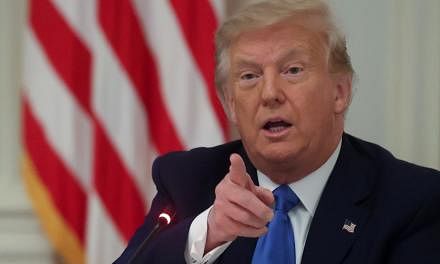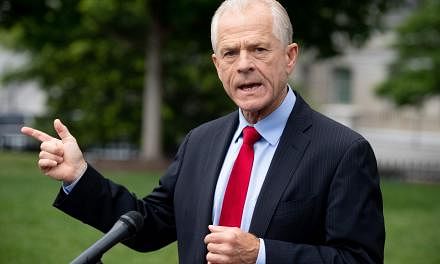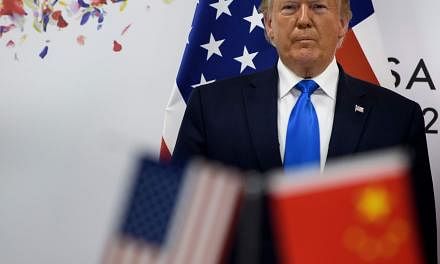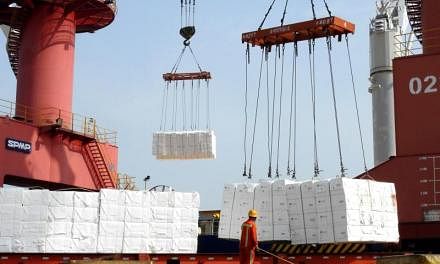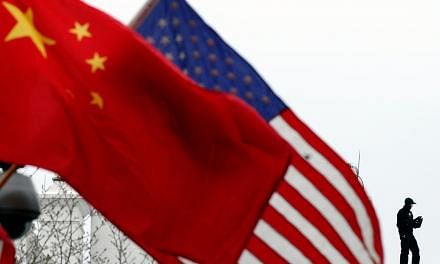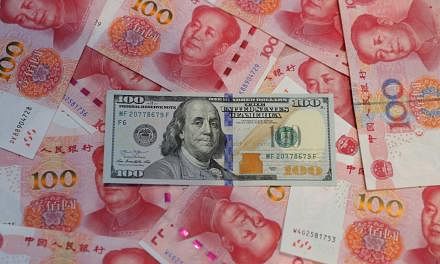CHICAGO • With US President Donald Trump's announcement of tariffs on another US$300 billion (S$413 billion) worth of Chinese imports, nearly all goods from China will be subject to import taxes, and Mr Trump says they generate billions of dollars in revenues for the US Treasury from China.
But that is not how tariffs work. China's government and companies in China do not pay US tariffs directly. Tariffs are a tax on imported products and are paid by US-registered firms to US Customs when goods enter the US.
Importers often pass the costs of tariffs on to customers.
Investors are worried that the increase in retail prices will hit consumer spending, which has underpinned the US economy, and trade uncertainty will make businesses hold back capital spending.
WHAT THE 'TARIFF MAN' SAYS
President Trump says the United States will be "taxing" China until a trade deal is secured. He has called himself the "Tariff Man", often repeating that China pays for US tariffs on its goods.
On May 5, he tweeted: "For 10 months, China has been paying tariffs to the USA."
HOW TARIFFS REALLY WORK US
Customs and Border Protection (CBP) collects the tax on imports. The agency typically requires importers to pay duties within 10 days of their shipments clearing Customs.
From early last year through May 1 this year, Washington has assessed US$23.7 billion in tariffs, according to data from the CBP.
Total tariff revenue rose by 73 per cent year on year in the first half of this year, to a total of US$33.9 billion, according to US Treasury data.
DO CHINESE SUPPLIERS BEAR THE COSTS?
Chinese suppliers do shoulder some of the cost of US tariffs in indirect ways. Exporters sometimes, for instance, may offer US importers a discount to help defray the costs of higher US duties and maintain their contracts and market share.
Chinese companies are losing business as US importers are scouting for cheaper, tariff-free sources of the same goods outside China.
Also, US-based importers are managing the higher tax burden in a number of ways that hurt American companies and customers more than China.
Such strategies include accepting lower profit margins; cutting costs - including wages and jobs of US workers; and deferring any potential wage hikes, in addition to passing on tariff costs through higher prices for US consumers or companies.
HIGHER PRICES FOR COMPANIES AND CONSUMERS
Higher duties on imports of Chinese and other products, for example, increased Caterpillar's production costs by US$70 million in the last quarter. It expects to pay between US$250 million and US$350 million in tariffs this year. In response to higher manufacturing costs, the heavy equipment maker has increased prices.
Walmart, the world's largest retailer, and department store chain Macy's have warned of an increase in prices for shoppers due to higher tariffs on goods from China.
US companies and consumers paid US$3 billion a month in additional taxes because of tariffs on Chinese goods and on global metals imports, according to a study by the Federal Reserve Bank of New York, Princeton University and Columbia University.
Companies shouldered an additional US$1.4 billion in costs related to lost efficiency last year, the study found.
WHAT DO COMPANIES IN CHINA PAY?
China has retaliated against Am-erican tariffs by imposing its own tariffs on imports from the US.
Most importers in China are Chinese. So, in the same way the US government collects import taxes on Chinese goods from US importers, the Chinese government takes in taxes on US goods from Chinese importers.
REUTERS



